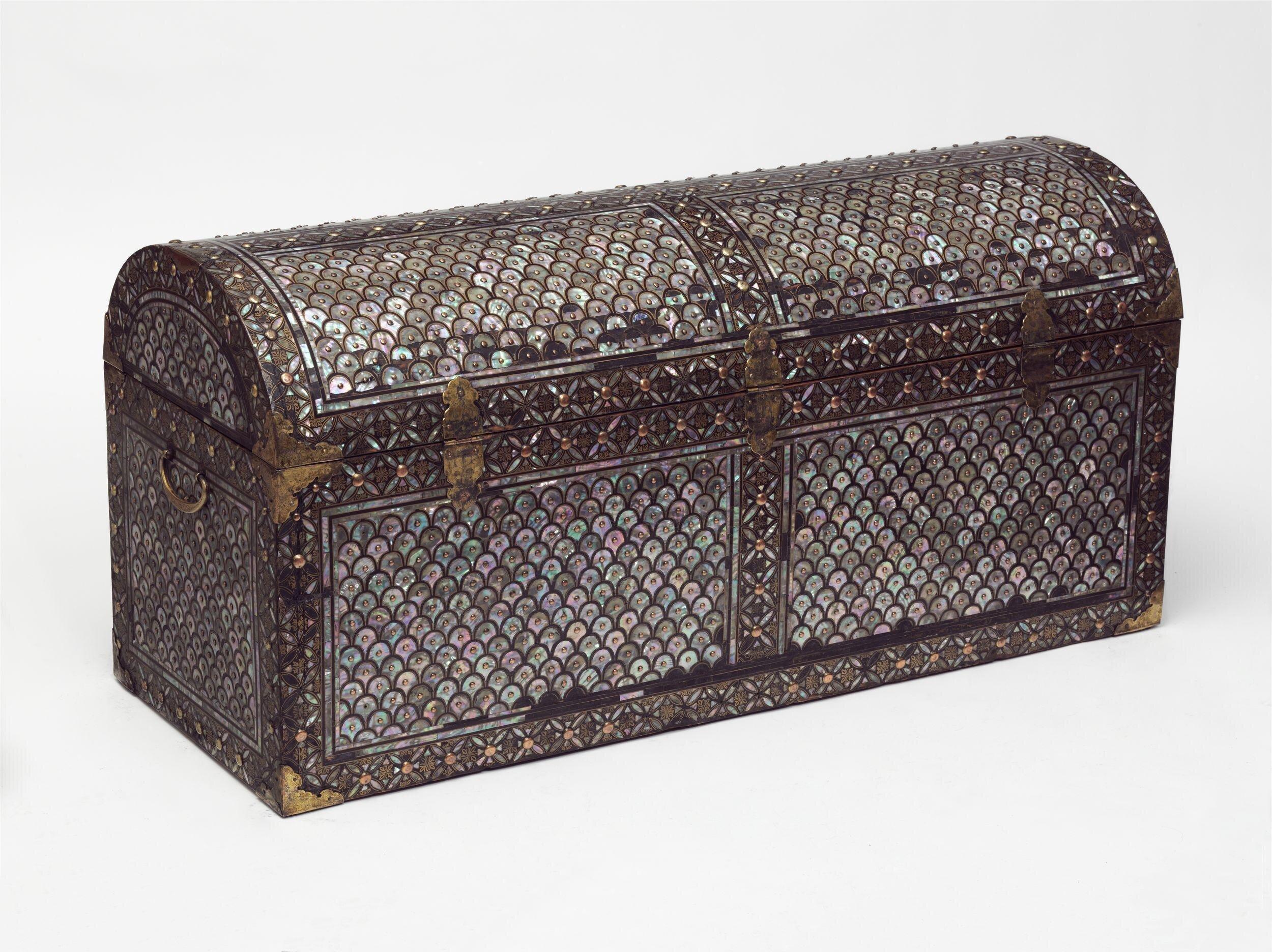Transoceanic Currents and Pelagic Materiality during Japan’s Nanban Period

A presentation on a group of 17th and 18th century objects produced and shaped by the waters between the Philippines, Taiwan, Ryūkyū, and Japan.
A Nanban Lacquered coffer, kamaboko-gata蒲鉾型 (lit. “box in the shape of a fish sausage”); wood covered with plates of mother-of-pearl held by gilded copper rivets; and black and gold hiramaki-e lacquer; Japan, late 16th-early 17th century. Victoria and Albert Museum, London, England. https://collections.vam.ac.uk/item/O14597/coffer-unknown/
During the 16th and 17th centuries, seacrafts moved goods, artworks, and peoples. But these vessels were at the mercy of the ocean and its forces: winds, monsoons, typhoons, currents. The waters from the Philippines, Taiwan, Ryūkyū, and Japan are defined by the Kuroshio黒潮, meaning “black tide,” which ferries equatorial water northwards along the western Pacific. The current enabled mariners to optimize long-distance trade, connecting East and Southeast Asia to the Americas; but it also introduced contingency to transoceanic voyages, causing shipwrecks. As a warm, nutrient-rich stream, the current was also a source of media for the luxury products that sustained these tradelines. In Japan, new tradelines led to production of Nanban-mono 南蛮物 (lit. “Southern Barbarian objects”), a class of Iberian-influenced objects and artworks that were often decorated with mother-of-pearl, shagreen, shell, and other pelagic materials. In this talk, I will explore how Nanban objects not only reference the Kuroshio current but also engage with the materiality of the ocean itself.
Part of the Art History Seminar Series, convened by Mary Roberts, and presented by the discipline of art history at the University of Sydney, with support from the Power Institute.
Join via Zoom
People
Drisana Misra
Drisana Misra is an Assistant Professor in the Department of Asian Studies at Cornell University. She studies the material and intellectual exchanges between the Japanese archipelago, the Americas, and the Iberian Peninsula during the sixteenth and seventeenth centuries. She received her PhD from Yale University in 2023, where her thesis won the Marston Anderson Prize in East Asian Studies. She is currently working on her first monograph, based on the dissertation, entitled Japanese New Worlds: Japanese New Worlds: Intersecting Imaginaries of the Nanban Period (c. 1543–1641).
